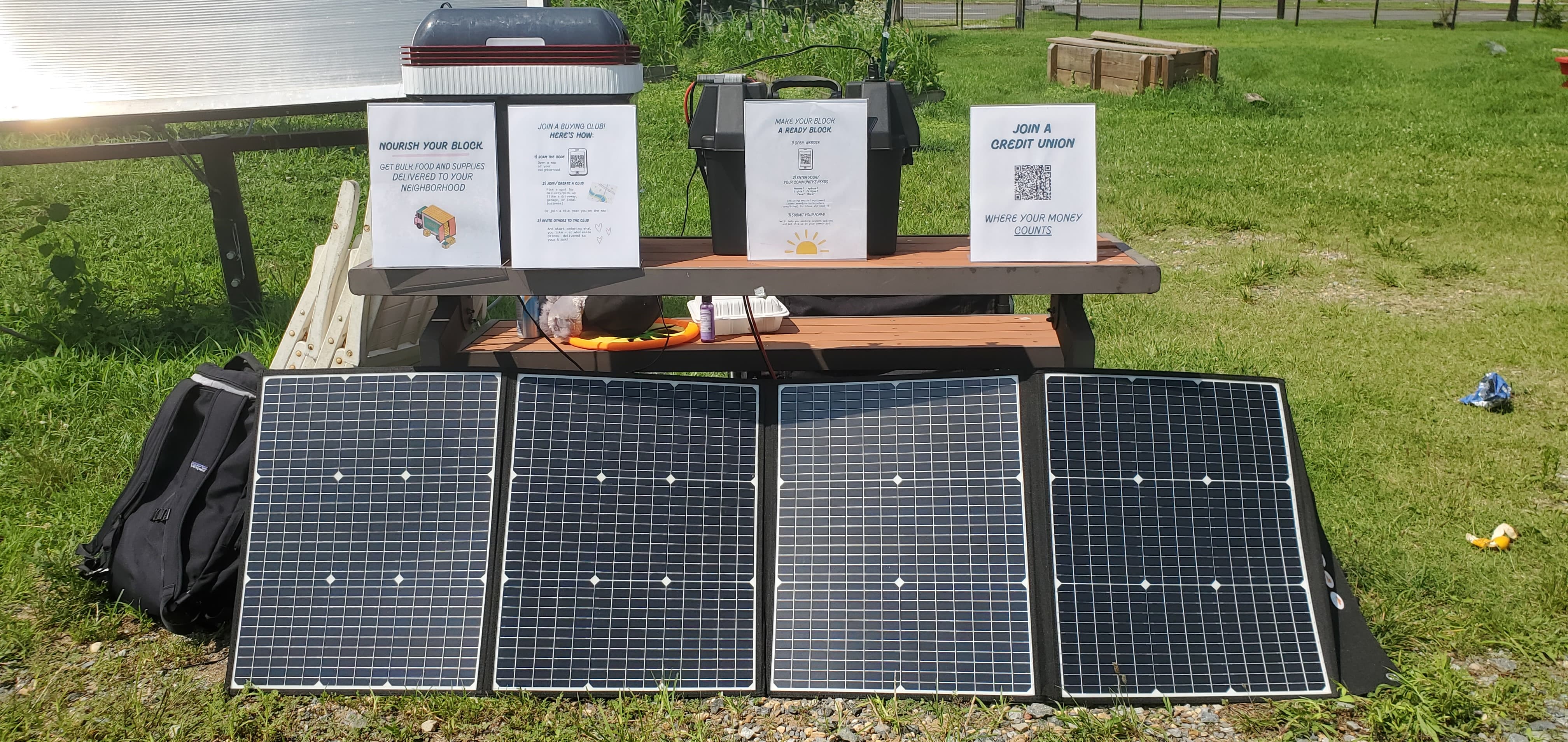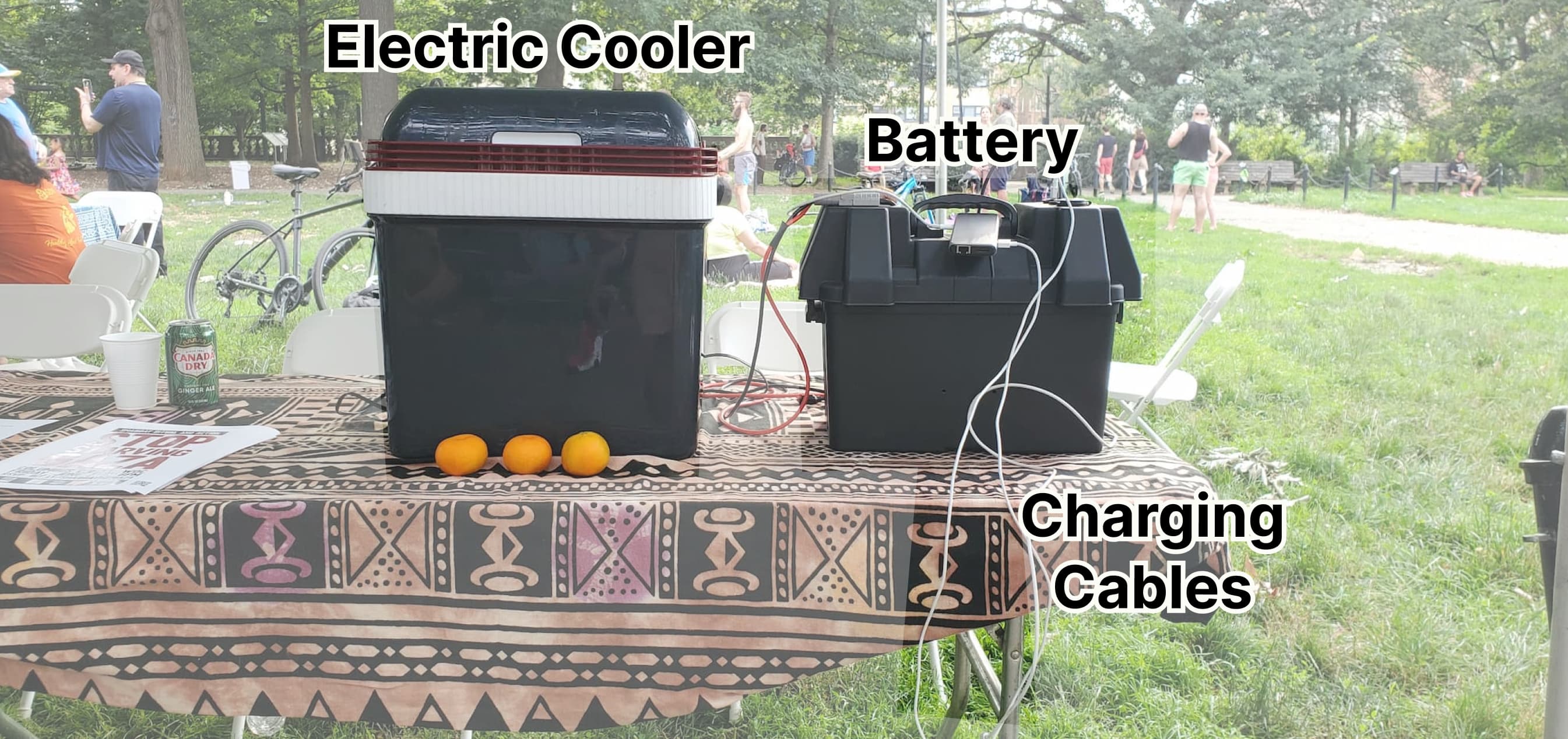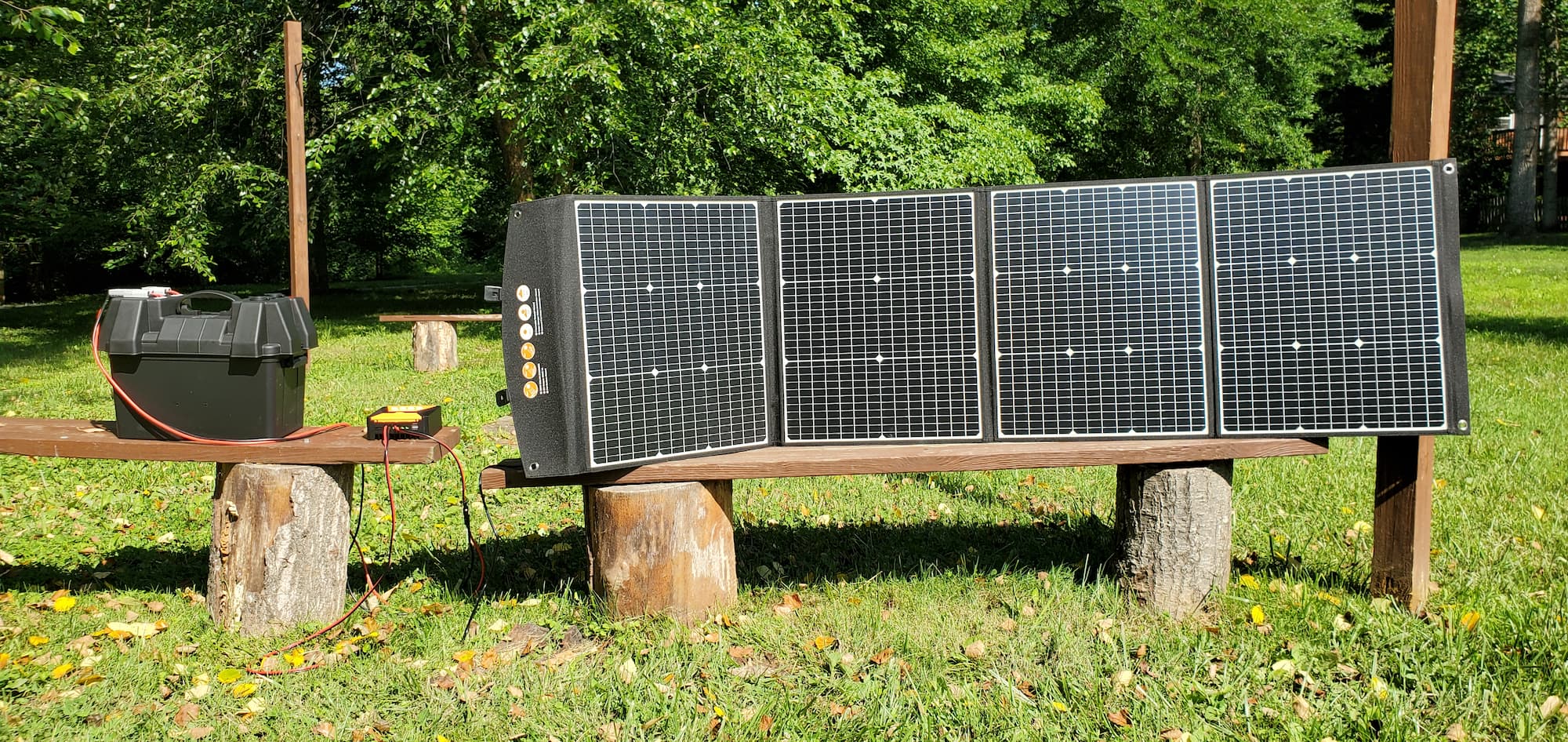Don't wait for a resilience hub.
Make one.
Neighborhood Solar Hubs
Close Modal
FAQs
What can solar kits power?
Everything you need!
📱 Phones
💻 Laptops
❄️ Fridges
🌐 WiFi
💡 Lights
Fans
🔊 Speakers
🌬️ Air filters
🚲 E-bikes
Slow cookers
💧♨️ Water heaters
Assistive wheelchairs/scooters
... and more!
Where do we imagine these first?
Congregations. Little free libraries. Art spaces and community centers. Parks where people gather.
They can be mobile, stationary, on-the-go, fixed — so you can pack them with you, or leave them in a space for the community.
How much do they cost?
$15 to $200 / month with 12 months financing, or $300 to $2400 total depending on your needs.
That cost can also be shared -- like $3 per person per month, for 5 to 10 neighbors. (You can try the calculator below to see more.)
Can these be used for education about solar?
Yes! They're fun too (plug 'n play!)
Can solar kits be used as a "third space"?
Yes! Bland cities and suburbs are boring -- sun it up, and bring people together!
Can I use them outside or inside?
Everywhere!
(For permanent set-ups outside, we recommend a box to protect the equipment)
Can I run appliances off a solar panel, without needing a battery?
Yes! Fridges, slow cookers (e.g. crockpots), and solar water heaters work great directly off a solar panel without needing a battery. This is intermittent energy, meaning it can go out temporarily (if someone steps in front of panels and blocks the light, for example) — so it works best for devices that build up, like a refrigerator getting colder, an oven getting hotter, or laptops and phones that store intermittent energy in their built-in battery.
How are people supposed to stay cool or warm when they go home?
Cooling packs (like ice packs) and warming packs (like hot water bottles) can be charged up at these central locations, for people to take home. This is the most resilient way to keep cool or warm — having a cool pack or warm pack right next to the body or under the blankets.
Additionally, we're exploring other resources that can help people get more resilient and thermally safe at home — like simple insulation for windows to keep steady temperatures and safe conditions.
What comes next?
Explore the tool below to see the needs for your community. If you're ready to order, feel free to click order — or you can share with friends/neighbors/family to make a payment plan.
Houses of worship, little free libraries, community bookstores, civic centers, art spaces, neighborhood cafes, disaster readiness networks, third spaces — we need you! Fill out the form and see what your community could use!
About
We envision a resilient transition, that starts with energy infrastructure in our communities. Places to charge your phone, get WiFi, cool down, listen to music, store something cold, socialize with community members, read under a light (or stars.) In your congregation, neighborhood, shop, courtyard, rooftop, bookstore, local park ...
Getting us out of our silos, and engaging with energy of the future — and today ☀️
That's the energy transition we imagine. Not just solar panels on roofs, which lose power when the grid goes out. Not a battery in every single home, until we can do it without deep-sea mining and extraction.
More like a resilience hub for the block, right in our communities.
Read More & FAQs
How It Works
- Pick your system size
- Adjust based on your power needs
- Order with the links in your cart and the guide



